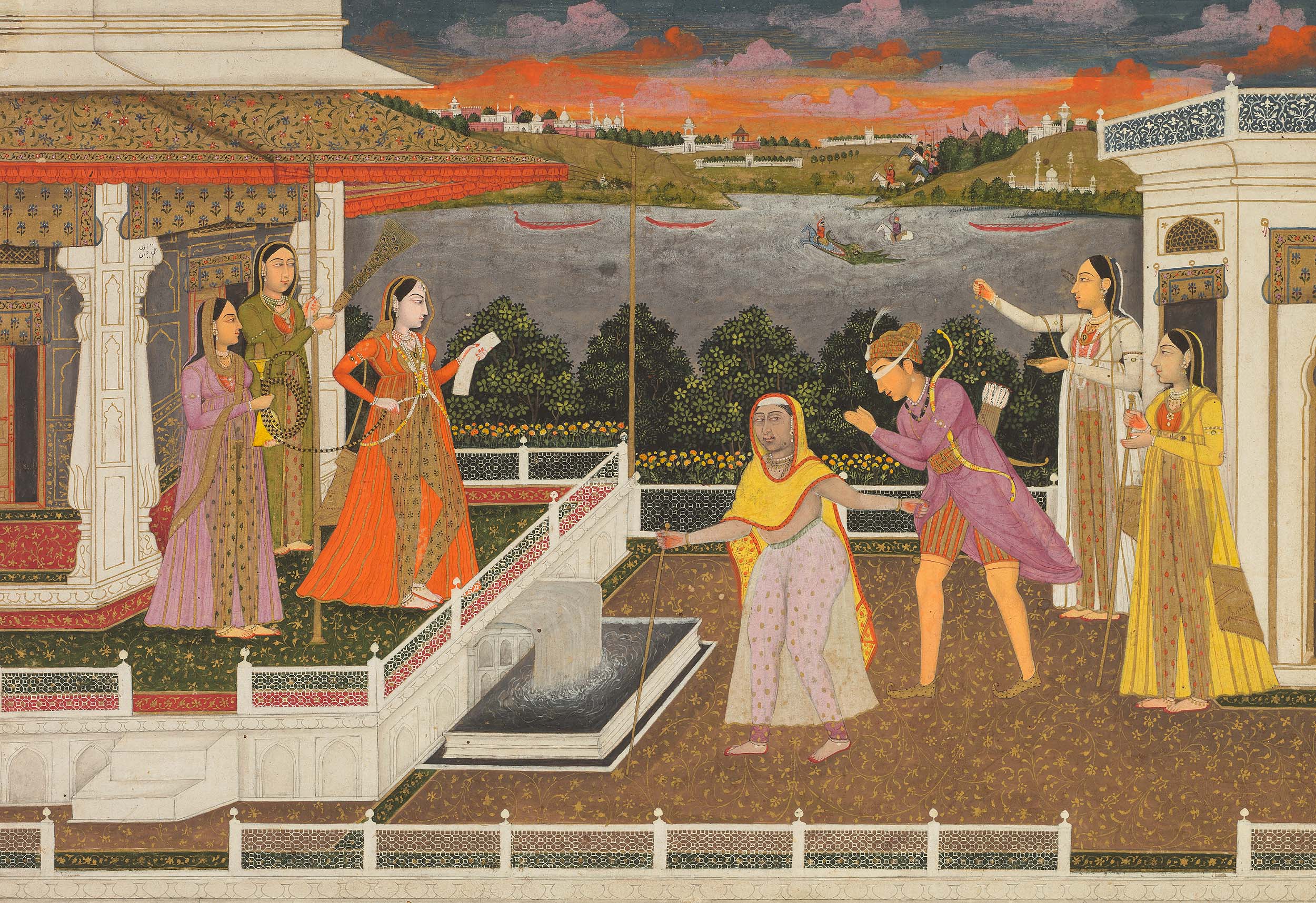This content is only available on desktop. Back to MAP Academy
Mask of Vaikuntha Vishnu, late 5th century. Learn more about 5th century masks
Designed by 

Bedecked with lavish screens, intricate jaali work and even a waterfall, this space conjures a sense of leisure. Here we see a princess being introduced to her potential suitor. The figures are dressed in Mughal courtly attire – these include peshawaz, jamas, angarkhas, paijamas and dupattas, with which women who practised purdah covered their heads. A majority of these outfits are rendered in colours that reflect South Asia’s rich dyeing traditions.
The painting captures the women’s quarters of the palace. Before the 18th century, the lives of women were rarely documented visually, besides in stylised forms in miniature paintings that mostly drew from artists’ imaginations. It was only later, that a few portraits of the South Asian wives or mistresses of British officers of the East India Company, such as the one titled Muslim Lady Reclining by Francesco Renaldi, began to be made by European artists.
A range of visual and performative arts flourished in Lucknow. Darogah Abbas Ali was a professional photographer and engineer best known for his albumen print albums such as The Lucknow Album and The Beauties of Lucknow. The former was an illustrated guide to the city’s monuments and ruins, whereas the latter features portraits of women, singers, courtesans, dancers and actors — multiple roles were often assumed by a single performer who was known as a tawaif — employed at the Lucknow court.
This painting is signed by the artist, Faizallah, who is recognised for depicting palaces,
complexes, orderly gardens and terrace views. Mughal
paintings, like this one, were produced across centres like Agra, Lahore and Lucknow between the 16th-18th centuries. Some of the most well-known Mughal artists include
Basawan, Bishandas, Daswanth, Farrukh Beg and Mansur, among others.
The scene takes place on an ornately carpeted terrace, overlooking Lucknow, the administrative and cultural capital of the region known previously as Awadh or Oudh. Lucknow has been ruled by various dynasties and governments over the centuries, who patronised handcrafted textile traditions most popularly including chikankari, zardozi and zari embroideries. Learn more about how lavish fabrics were leveraged by kingdoms and empires to affirm their place in South Asian society here.
This content is only available on desktop. Back to MAP Academy